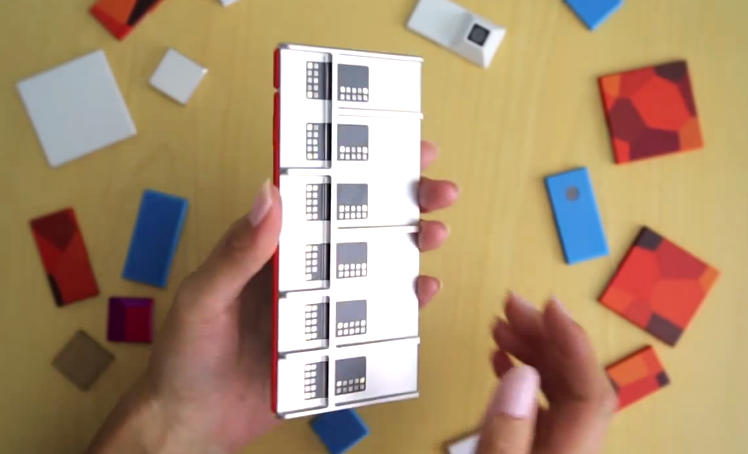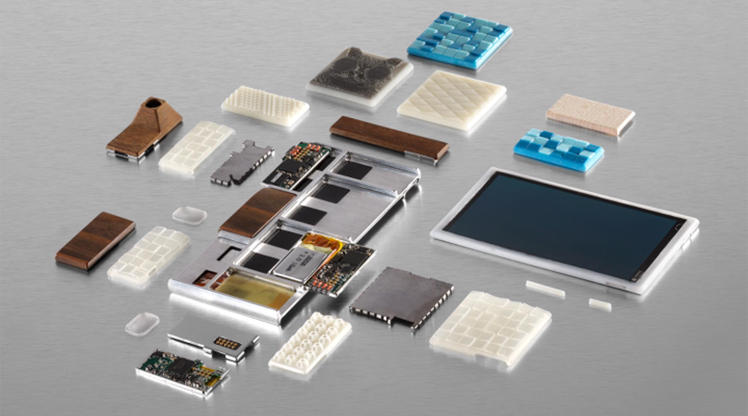If you haven’t seen it by now, you should know that February is going to be quite an interesting month. Why you ask? Well, the answer is simple: Project Ara.
What exactly is Project Ara?
Ara is the name given to Google’s latest headline initiative: building an open hardware platform, one that would allow users to create an entire range of modular smartphones. Think of it as smartphone Lego: you can take bits and pieces or “blocks” and piece them together to create a customized phone.

Google unveiled this in Puerto Rico. The basic platform is an endoskeleton (“endo” for short). This holds the various modules of the smartphone such as display, battery together. Into it you plug in different modules and upgrade and/or downgrade parts of your phone as and when required. The modules, once swapped and done, are locked into place with electromagnets.
The basic phone will apparently cost $50, and includes a frame, display, battery, WiFi module and a relatively low end CPU, and the price would scale accordingly with the components installed. Note that Google hasn’t stated these numbers to be just so – from what we gather those are component costs rather than an selling price.
Interestingly, Google is not the only manufacturer here. Modules would eventually be manufactured by other hardware companies – creating a module ecosystem, just like for apps. Modules can be hotswapped while the phone is on, so we assume that this means you can literally fix a better or more powerful camera or larger display to your smartphone on the go. There’s even a small battery to act as a backup in case you wish to switch your main battery to a higher capacity one.
As for the availability of these modules, they will – and we quote – “be available at an official Google store and at third-party stores in your area”. If you’re like Sri Lanka in that you don’t have an official Google store, wait for a phone shop to fly in a few units from Singapore.
How will this affect the world?

The sheer idea of being able to make your own phone is futuristic – if not somewhat crazy – idea. Just imagine being able to take the camera from Sony for example, the Display of a Samsung AMOLED screen, the battery of a Nokia, and fusing it all together? To make a Blade reference, all of their strengths, none of their weaknesses.
I kicked this idea over with Yudhanjaya, and we agreed that the obvious big picture is that a modular smartphone would destroy the traditional phone model lineup completely. Why buy a flagship when you can start cheap and build your way up, right? But we doubt the destruction will really happen. This kind of flexibility has always been present in the PC, and many people are still happy to go out and buy a single, sealed, branded unit. However, the ease of use might change that.
But on the other hand, you’ll need manufacturers like Sony, HTC and Samsung to start developing these modules so that they can be used with Ara. Here in lies a conundrum. Would they really ditch their own smartphone lineup to invest their time and money in something that is only part theirs? Would Sony like to lend one of their lenses to a smartphone with a Samsung screen or vice versa? Ultimately, the consumer has the power to choose – but will manufacturers dance to the consumers’ tune?
You would also be swapping components on a regular basis. What about their longevity? Over time, constant swapping of components would probably wear down the connecting mechanisms or even damage the endoskeleton.
A successful project Ara will give rise to an entire industry of module manufacturers, just like the App Store fuelled an explosion in developers. It’s possible that some of these might actually emerge as indirect threats to existing manufacturers.
The next concern is whether or not Project Ara is cost effective.

Think back to Google Glass, which was another initiative that tried to give the consumer a new experience. So far it has been just another expensive experiment – and it’s been shelved. It is cool, yes. It’s very cool. It’s technologically advanced, but realistically, how many people can afford to buy one?
Will Project Ara be the same? The base spec of Ara is said to be around $50 – which is acceptable and affordable, But as time goes by, if regular smartphones cost less despite them being non-customizable, the result would be a shift in the market trend in favor of the normal smartphone, leaving Ara in the dust. There will always be a niche of smartphone and gadget enthusiasts that I’m pretty sure would be willing to take the plunge for Ara when the time comes, but we’ve seen how good, cheap phones can be made (Xiaomi, anyone) and these would naturally compete. An unless Ara really picks up, we’re not going to see that huge module ecosystem. Supply and demand, after all.
The design too bears a significant burden. If the design is ugly and/or is clunky and complicated to operate, nobody’s going to buy it – people want beautiful products. We don’t have to worry about marketing, but obsolete software, bugs in the works, apps crashing – these are very real deterrents. History’s seen many great devices go down because of things like this.
Pricing is always the decisive factor. Thankfully, that’s something Google understands – you only need to look at the Nexus 5 to see the effects there. Given half the chance, I’d take Ara. The ability to simply upgrade your existing hardware by simply plugging in a new part seems far more viable than spending money on a brand new phone.
Call me a naysayer, but while Ara is cool, I don’t think it’s ready for mass-production – yet. Right now, it’s just like Google Glass, like an alpha of a product. Time will tell whether Google changes the smartphone industry forever.







GIPHY App Key not set. Please check settings